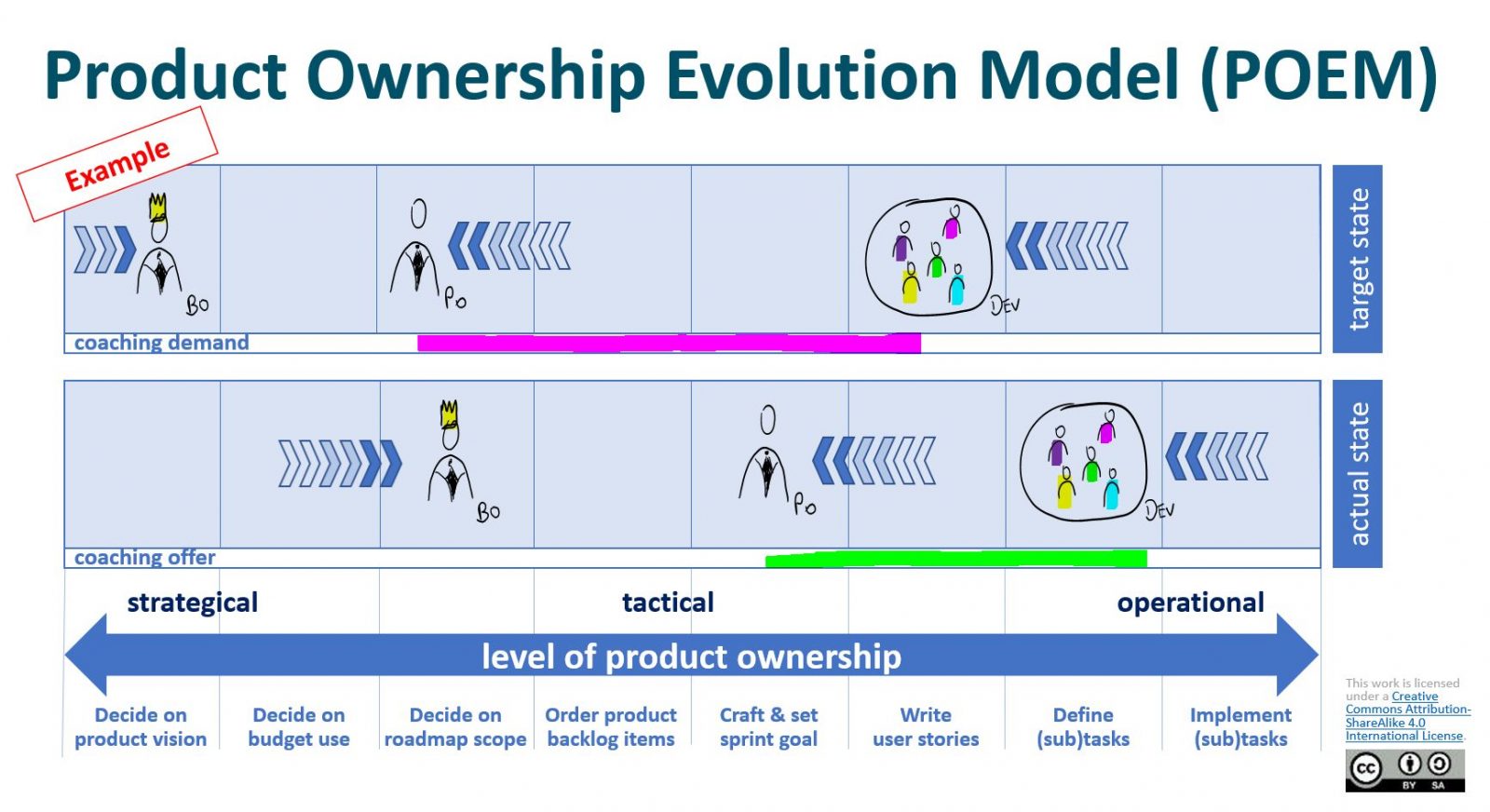Global Scrum Gathering Vienna 2019
Tim presented our talk "Making Product Ownership Explicit" at the Global Scrum Gathering of the Scrum Alliance on October 30th in Vienna
The main topic of this talk: Product Ownership must be agreed transparently and in detail between all roles involved. Product Ownership is the responsibility of the entire Scrum team.
You can find the slides of the talk here: Talk Scrum Gathering Vienna 2019
Develop Product Ownership
A model for the evolution of product ownership in an organization. It helps to visualize as well to discuss the current and future design of product ownership and to further develop it together.
The model can be used to agree on responsibilities for product ownership between all roles.
Finally, a possible coaching need of the acting persons/roles can be identified, which Scrum Master and/or Agile Coaches have to cover.
Example

The Product Ownership Evolution Model - briefly explained
The Product Ownership Evolution Model shows in a simplified representation which agile role currently assumes which level of product ownership. It compares the current status within an organization with the desired target status.
Level of Product Ownership
In the lower part of the model, the most important strategic, tactical and operational task areas are presented, which together describe agile product ownership. The concrete task areas may differ from organization to organization.
Actual State
In this part the agile rolls are drawn one after the other. The Product Owner is positioned horizontally at the point where she can (still) decide on a task area completely independently.
Example: If the Product Owner can decide on the sprint goal and on user stories completely independently of others, but has to obtain the approval of a business owner for the roadmap and receives restrictive statements for the sorting of the product backlog, the Product Owner is drawn horizontally in the column "Set Sprint Goal".
In step three, the Business Owner (= just a synonym for the person in the organization who authorizes the Product Owner to fill out his or her Product Owner role) is drawn in. In some organizations this may include CPO, CEO, Middle Management, etc.). The same applies here: horizontal positioning according to the areas of responsibility, which the BO can decide completely independently.
Target State
The upper part of the model represents the desired target state of responsibilities for the individual tasks of product ownership.
Here, too, the PO is drawn in first, but this time it is positioned in such a way that he or she can decide independently for the task areas presented in the future. The Dev team and the Business Owner are then drawn in accordingly.
Coaching offer
This line marks the task areas for which coaching support can already be offered to the team. Usually the Scrum Master / Agile Coach should provide this.
Coaching demand
This line marks the coaching support that will be necessary in the future with regard to the changes to the target state.
Developing a common understanding of product ownership
The model can be used by any employee to become more aware of the own role.
However, the greatest value for the entire organization only arises when all roles develop a common understanding. The team members of the development team, the Product Owner and the Business Owner initially develop a subjective version independently of each other. In a second step, the different versions are reflected on by all participants in a moderated workshop and a common version is created. This results in a better understanding of product ownership in the organization.
The "Product Ownership Evolution Model" (POEM) can also be helpful for reflection with management. It concretizes the different expectations and can thus support a constructive discussion on a meaningful agile setup for an organization.
Product Ownership Evolution Model and Delegation Poker
In practice, the Product Ownership Evolution Model can be combined very well with a Delegation Board. All strategic, tactical and operational tasks can be agreed between the respective roles with the help of the Management 3.0 method of Delegation Poker.
Identify the need for coaching
The need for (possibly additional) support and coaching quickly becomes apparent from the comparison of the current and future design of product ownership. The main task of the coaches is to sensibly synchronize the development of the organization and the individual roles to the target picture.
"POEM is a well understandable tool that has helped us to look at ourselves together and critically from "outside". Tim and Oli, as real Product Owner experts, provided us with interesting experience. Just the right mixture to accompany the agile process and drive it forward!"
Silke Kanes - VP Product Development
CONTENT MANAGEMENT AG
"POEM has helped us to talk about mutual expectations and to make a new structure explicit after organizational changes. A great agile tool, which is not only a discussion opener but can also reveal that supposed "self-evidences" may not be considered the same by everyone..."
Alexander Jäger - CTO
Trusted Shops GmbH